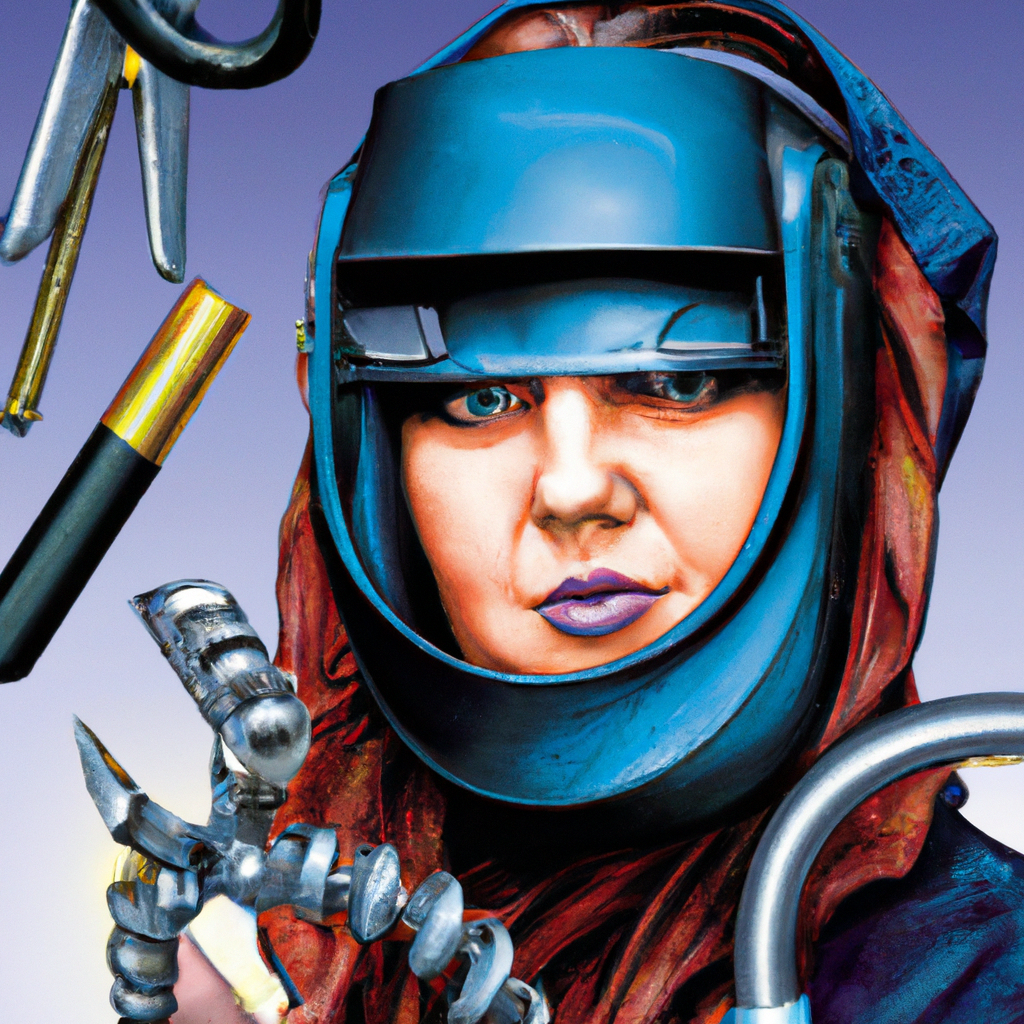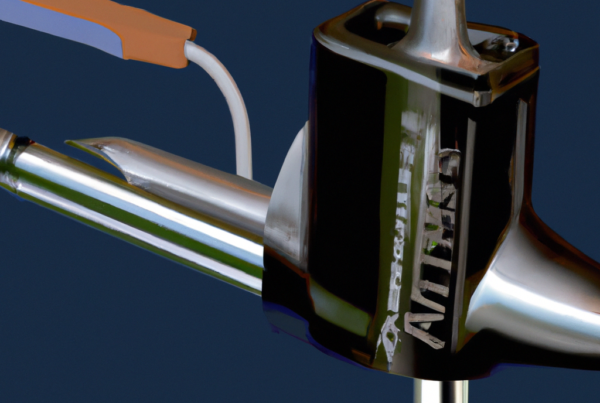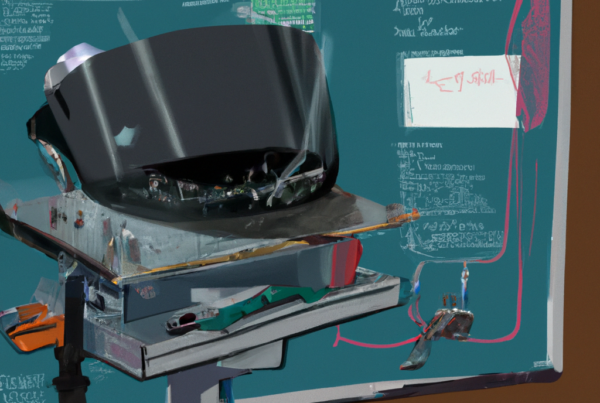Can a woman be a welder? Absolutely! Welding is an in-demand trade, and women are increasingly entering the profession and creating meaningful and lucrative careers. Women welders bring a unique set of skills and perspectives to the welding field, and the industry is benefitting from their hard work and dedication. From metalworking to fabrication, welding is a great job for women of all ages. Women are able to use their creative and technical skills to make a difference in the workplace. With the right training and certification, welding is an incredibly rewarding profession for women. The welding industry needs more women to join the ranks and share their ideas and talents. Let’s make welding a career for all genders!

What is welding?
Welding is a fabrication process that uses heat to join two pieces of metal together. It is commonly used to fabricate structural components, such as beams, frames, and other building materials. The process usually involves heating the two pieces of metal until they melt together, forming a strong bond. It is a highly skilled profession, and typically requires specialized equipment and safety gear.
Can a woman be a welder? Absolutely! Women have been contributing to the welding industry for many years. In fact, the number of female welders is increasing as more women enter the field. Women welders must possess the same technical skills as their male counterparts, such as being able to accurately measure and cut metal, and have the same level of safety awareness. Women welders must also be physically fit, as welding can be a physically demanding job. Women welders bring unique perspectives and ideas to the industry, helping to increase innovation and creativity.
Women welders have the same opportunities as male welders, and are equally capable of producing quality work. With the correct training, equipment, and safety gear, women welders can be successful in this field.
What are the tools and equipment necessary for welding?
Welding is a process of joining two or more pieces of metal together by heating them to a high temperature. To do this, welders must be equipped with the right tools and equipment.
The primary tools and equipment necessary for welding are:
- Welding helmet and face shield
- Welding gloves
- Welding jacket
- Welding machine
- Welding rods
- Wire brush
- Hammer
- Grinder
- Clamps
- Vise
These tools and equipment help welders to complete the job safely. They provide protection from burns, sparks, and metal fragments that may come in contact with the skin during the process. Additionally, they provide the necessary tools to cut, shape, and join metal pieces together.
Can a woman be a welder? Absolutely! Welding isn’t gender-specific and anyone can learn the necessary skills and operate the tools and equipment necessary to become a welder. In fact, many women have been successfully working in the industry for years.
Are there any specific requirements for welders?
Welding is a physically demanding job, and welders need to have certain skills and physical attributes to perform the job. The most important requirements for welders are:
- Good hand-eye coordination
- Physical strength
- Ability to work in confined spaces
- Ability to work in uncomfortable positions
- Knowledge of welding processes
Can a woman be a welder? Absolutely! Welding is not a gender-specific profession, and there are many women who have successfully completed welding courses and are now employed as welders. Women welders must possess the same skills and attributes as male welders, and many women welders are just as successful as their male counterparts.
Are there any gender-specific requirements for welders?
Can a woman be a welder? Absolutely! Women welders have become increasingly common in recent years, and there are no gender-specific requirements for welders. The qualifications for welders are the same regardless of gender.
- Welders must have the physical strength and endurance to perform the job.
- They must have good hand-eye coordination to manipulate the welding tools.
- They must have a good understanding of mathematics and basic science.
- They should also have a good grasp of safety procedures.
Women welders must also meet the same certification requirements as men. These include completing an apprenticeship program and passing a certification exam. To become a certified welder, one must demonstrate a mastery of welding techniques, safety protocols, and other related topics.
Welding is a field that is open to anyone who has the skills and dedication to excel. With the right training, both men and women can become successful welders. Women welders are becoming more common in the industry, and they bring valuable skills and perspectives to the job.
Are there any safety concerns that should be taken into consideration for welders?
Welders must take into account a number of safety concerns when working. These include:
- Using the proper protective equipment, including a welding mask, gloves, and a leather apron
- Ensuring their workplace is well-ventilated to avoid exposure to toxic fumes
- Taking frequent breaks to rest their eyes from the bright light of the welding arc
- Maintaining proper posture to avoid fatigue and injury
- Inspecting tools before use to ensure they are in good working order
Yes, a woman can be a welder. They may face additional safety concerns due to the physical demands of the job, but with the right training and protective equipment, women can safely weld just as well as men.
What types of welding can a woman do?
Welding is a profession that is traditionally dominated by men, but that doesn’t mean women can’t be welders. Women can weld too, and there are a variety of welding techniques they can learn. Women can become certified welders in some countries, and can specialize in a variety of welding techniques.
Types of welding that women can do include:
- Shielded Metal Arc Welding (SMAW)
- Gas Metal Arc Welding (GMAW)
- Flux-Cored Arc Welding (FCAW)
- Gas Tungsten Arc Welding (GTAW)
- Submerged Arc Welding (SAW)
- Plasma Arc Welding (PAW)
Each of these welding techniques has its own advantages and drawbacks, and women can choose the one that best suits their skills and preferences. For instance, Shielded Metal Arc Welding (SMAW) is a popular welding technique that is relatively easy to learn, and is often used by beginners. Gas Metal Arc Welding (GMAW) is a faster process and is often used in industrial applications, while Flux-Cored Arc Welding (FCAW) is often used for welding thicker metals. Gas Tungsten Arc Welding (GTAW) is a highly precise process that is often used in high-end applications, and Submerged Arc Welding (SAW) is a highly automated process that is often used in large-scale industrial welding applications. Finally, Plasma Arc Welding (PAW) is a process that is often used for welding hard materials, such as aluminum.
As you can see
What qualifications or certifications are required to work as a welder?
Welding is a skill that requires extensive training and experience. To become a certified welder, one must complete a welding program or apprenticeship, pass a welding certification test, and obtain a welding certification. The certification program includes tests on the different types of welding processes such as arc welding, tungsten inert gas (TIG) welding, and gas metal arc welding (GMAW). One must also demonstrate mastery of specific welding techniques and safety protocols.
The specific requirements for welding certification vary by industry and application, so it is important to research the requirements of the industry or job you are interested in. Some of the common certifications for welders include the American Welding Society (AWS) Certified Welder program, American Society of Mechanical Engineers (ASME) Code Qualification, American Petroleum Institute (API) Certification, and Nuclear Quality Assurance (NQA-1) Certification.
Can a woman be a welder? Absolutely! Women have become welders and excelled in the profession. There are no physical requirements to become a welder, so anyone with the proper training and certification can pursue this career.
What are the opportunities for women in welding?
Women have more opportunities in welding than ever before. Though the industry remains male-dominated, women are beginning to make their presence felt in various welding roles. From entry-level jobs to advanced positions, women can find a place in the welding industry.
Women can find roles in welding such as:
- Welding instructor
- Welding engineer
- Welding supervisor
- Welding technician
- Welding fabricator
- Welding inspector
As with any job, it is important for women to have the right qualifications and experience to be successful. Many welding companies offer apprenticeships and training programs that will help women get started in welding. With the right training and experience, women can find career paths in welding.
The welding industry is changing and more businesses are recognizing the talent and skills women can bring to the table. Women welders are not only making a difference in the industry, but they are also inspiring more women to pursue a career in welding.
In conclusion, it is clear that women can be successful at welding. With the right qualifications, experience, and training, women can find rewarding careers in welding. Women can make a difference in the welding industry and lead the way for future generations of female welders.
What are the potential career paths for welders?
Welders have a wide range of career paths to choose from. From creating new designs to repairing existing structures, the possibilities are endless. Here are just a few of the potential career paths for welders:
- Industrial welding – welding parts and components for large-scale production
- Construction welding – constructing and repairing buildings and other structures
- Shipbuilding welding – fabricating and repairing ships and other marine vessels
- Automotive welding – constructing and repairing vehicles and their components
- Aerospace welding – fabricating and repairing aircraft and spacecraft
Yes, a woman can be a welder. The job requires physical strength and stamina, but with proper safety training and the right equipment, welding can be a rewarding career for any gender.
Are there any resources available to help women become welders?
Can a woman be a welder? Absolutely! Women can become welders and there are a variety of resources available to help them do so. Here are some of the top resources:
- Welding Schools and Programs: Many technical schools and community colleges offer welding classes and programs specifically tailored to women. The classes provide hands-on experience and valuable insight into the field.
- Professional Organizations: Professional organizations such as the American Welding Society and the Women in Welding offer mentorship, support, and resources to help women become welders.
- Online Resources: Many websites, such as Women in Welding and Welding Tips and Tricks, offer information and guidance to help women learn more about the welding profession.
- Welding Supply Stores: Local welding supply stores are a great source of information on welding techniques, safety guidelines, and the latest welding technology.
These resources can help women become welders and, ultimately, make their mark in the welding industry.



